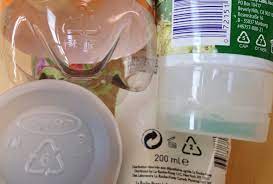Plastic containers are pervasive in our society ¡ª they hold our take-out food, store our leftovers, and package countless products. But as we grow more aware of the environmental implications of plastic waste, the concept of reusing these containers becomes increasingly important.
In this post, we’re going to tackle the question of how many times we can effectively and safely reuse these containers.
How Many Times Can You Reuse Plastic Containers?
Now, the answer is ¨C it depends. You’re thinking, ¡°Come on, that’s a bit vague,¡± right? But stick with me here.
You see, the number of times a plastic container can be reused is contingent on several factors, including the type of plastic, the quality of the container, and what it’s being used for.
Let’s start with the type of plastic.
Harder, more durable plastics like PETE (recycling number 1) or HDPE (recycling number 2) can withstand more reuse cycles compared to more flimsy plastic like LDPE (recycling number 4) or PP (recycling number 5).
Authors note: Plastics are usually categorized into different types based on their resin codes. The Resin codes of a plastic container can be found on the site or under the plastic, as shown below:

Now onto the quality ¨C a well-constructed, high-quality plastic container will typically last longer than a cheap one, meaning you can reuse it more times before it starts to degrade or break.
But again, the well-constructed plastic should have a resin code that is safe for reusing.
And the use case? It plays a significant role too.
If you’re using the container for storing dry food items or non-food items, it can be reused many more times compared to when used for liquids, especially hot ones. When plastics come into contact with certain liquids, they can leach chemicals. This is particularly true for hot or acidic foods.
It’s worth mentioning that if you start to notice your plastic containers warping, cracking, or changing color, it’s best to always change them.
Using damaged containers, especially for food, can be harmful as they are more likely to leach potentially harmful chemicals, which have been alleged to cause cancers and other sicknesses.
So, in the end, the question of ¡°How many times can you reuse plastic containers?¡± doesn’t have a one-size-fits-all answer. You’ve got to factor in the type of plastic, the container’s quality, and how you’re using it.
What type of Plastics is best to reuse?
Let’s start with the good ones. High-Density Polyethylene (HDPE, or plastic #2) and Polypropylene (PP, or plastic #5) are generally considered safe for reuse.

You’ll often find HDPE in things like milk jugs, cleaning solution bottles, and even some types of food storage containers. It’s pretty resistant to wear and tear, which makes it a good candidate for multiple uses.
Then there’s Polypropylene.
This is the stuff your yogurt containers and microwavable plastic dishes are made from. It’s resistant to heat, which means it doesn’t break down as easily as some other plastics when subjected to high temperatures.
This makes it great for microwaving leftovers, and also means it can be washed in the dishwasher without worrying about it melting or warping.
On the flip side, some plastics are not the best for reuse.
For example, plastic #1, also known as PET or PETE (Polyethylene Terephthalate), is widely used for single-use bottles and food containers. While it’s safe for its intended single use, it’s not designed to be reused as it might degrade and potentially leach chemicals.
Another one to be cautious with is plastic #7, which is a catch-all category that includes Polycarbonate (often used in reusable water bottles and baby bottles). Some plastics in this category can leach BPA, a chemical that has been linked to health concerns.
Is it Ideal to Reuse Plastic Container?
Now, you might be wondering if it’s still safe to reuse plastic containers.
Well, most likely yes, but there maybe some factors that influence this.
Let’s begin by considering the environmental perspective.
Reusing any item, plastic containers included generally has a positive impact on our environment. It means less waste ending up in landfills or in our oceans, and less energy used to create new products. In this sense, reusing plastic containers is a win.
But it’s not just about the environment.
Let’s talk about health and safety.
As we’ve mentioned before, some plastics can potentially leach chemicals into food, especially when they’re heated or damaged. The risk isn’t huge, but it’s something to be aware of.
For instance, reusing a PET water bottle might not be the best idea because it’s not designed for long-term use. On the other hand, using a PP or HDPE food storage container multiple times is generally considered safe, as long as it’s in good condition.
The practicality factor is another aspect to consider. Some plastic containers are quite durable and versatile, making them handy for a variety of uses.
Need somewhere to store leftovers? Plastic containers to the rescue. Need a pot for a small plant? Again, repurposed plastic container. However, they have their limits. They’re not always the best option for storing certain types of food, especially hot, greasy, or highly acidic items.
Conclusion
So there we have it ¡ª the journey of plastic containers doesn’t end after their first use. Many of them can take on second, third, or even multiple lives. The key is to know which types are safe to reuse and how to care for them.




